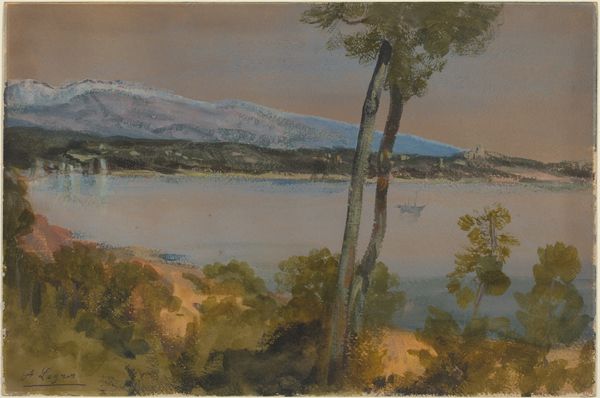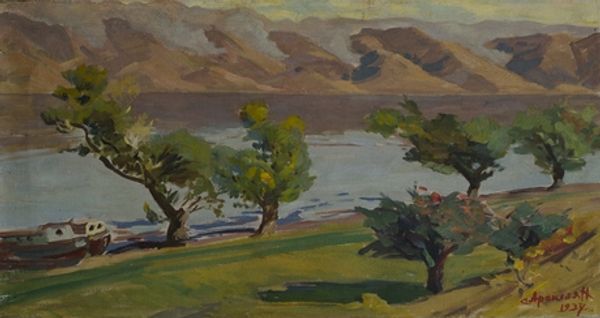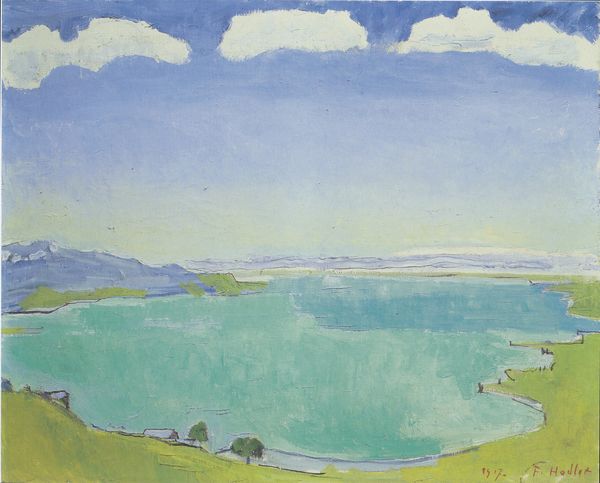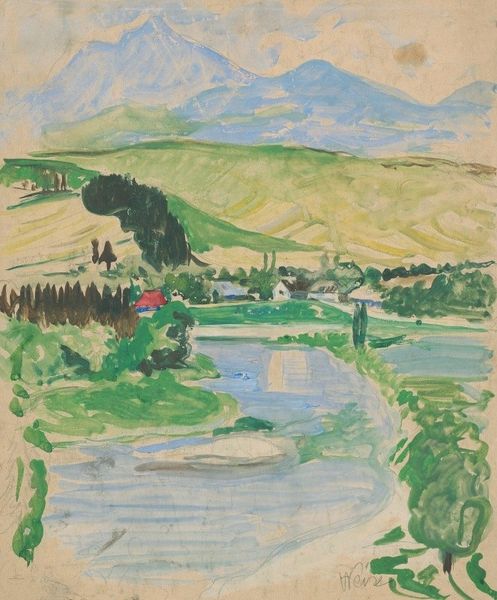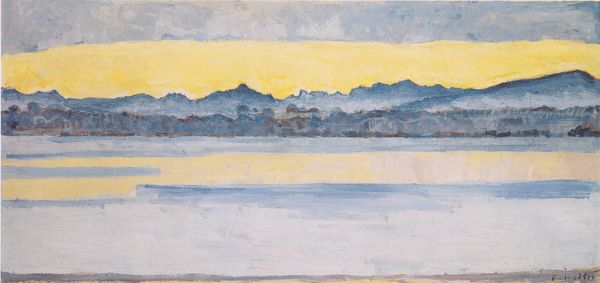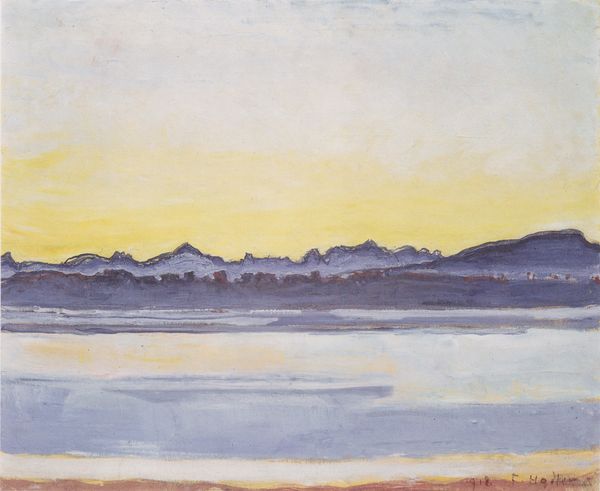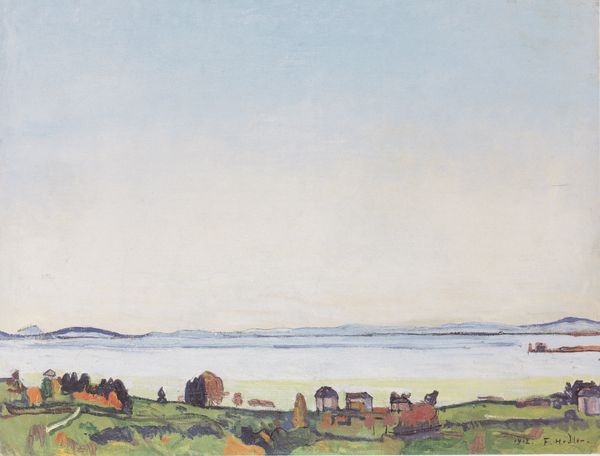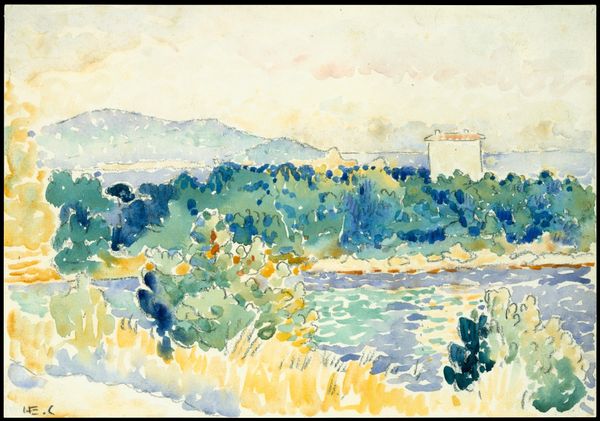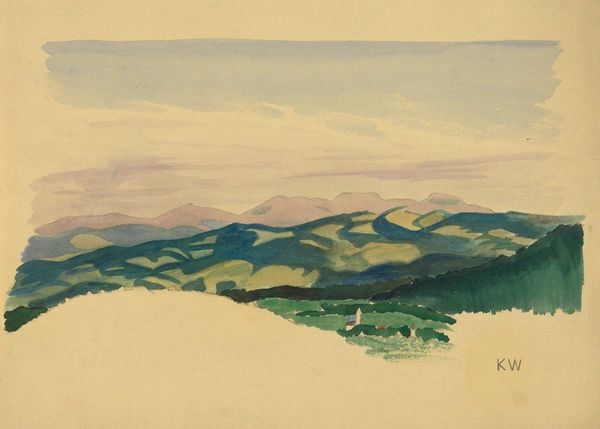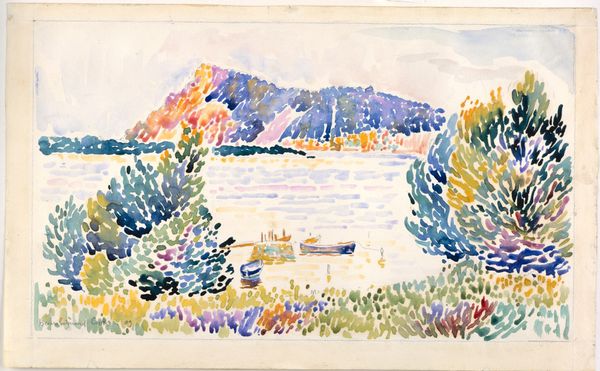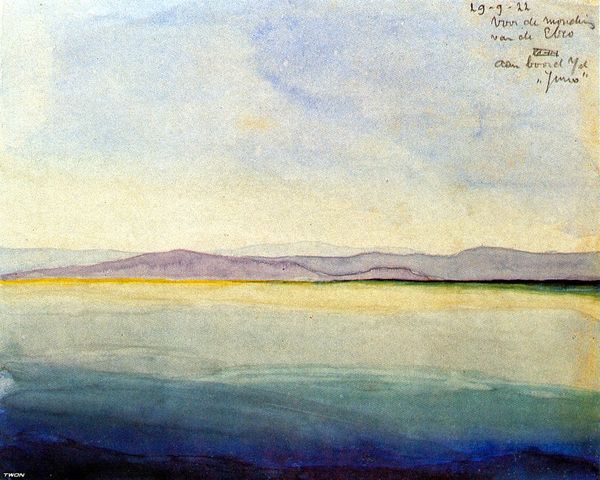
Dimensions: 65.5 x 81 cm
Copyright: Public domain
Curator: The serenity! Before us hangs Ferdinand Hodler’s “The river Aare in Solothurn,” executed in 1915. What’s your immediate response? Editor: A deep sense of calm. The blues are so very muted, creating a dream-like almost unreal atmosphere. Curator: Indeed, Hodler was interested in evoking universal feelings through his art. Note the symmetrical arrangement. The composition revolves around the Aare’s horizontal expanse. Trees frame the river, leading our eye toward the distant mountains. Editor: And those mountains, that cool bluish hue...mountains traditionally symbolize obstacles to overcome, or perhaps spiritual aspiration? Does this landscape connect to a longing within Hodler himself, particularly given the year it was created, amidst World War One? Curator: An interesting perspective. While biographical interpretations are always possible, I am more interested in his formal approach. Hodler uses a technique he called "Parallelism," mirroring forms and colors to achieve a sense of harmony and unity. The rhythm of the trees on either bank, the repetition of blue in the water and mountains. Editor: The parallelism resonates with visual echoes and patterns. The river becomes a metaphor for time. Each ripple reflecting the past, present and future, wouldn’t you say? Water, rivers especially, are heavily loaded with symbolic weight—birth, cleansing, the passage of life… Curator: While water holds symbolic associations across cultures, I find Hodler's handling of paint just as captivating. Look at the broken brushstrokes in the foreground. They give an almost tactile quality to the trees. They add depth to the landscape as well. Editor: There’s also the interesting choice to keep the horizon line relatively low. That certainly makes the sky feel quite expansive; boundless, almost divine. Do you see that connection? Curator: The low horizon does indeed contribute to the landscape's grandeur. However, I believe that the overall structure here creates the sensation. This is, simply put, a painting where every element has been carefully positioned in support of the aesthetic whole. Editor: Perhaps we’re both right. Hodler's formal mastery enhances the painting's symbolism. I appreciate how a sense of peaceful contemplation is expressed through his vision. Curator: And I appreciate the clear, considered visual articulation.
Comments
No comments
Be the first to comment and join the conversation on the ultimate creative platform.
